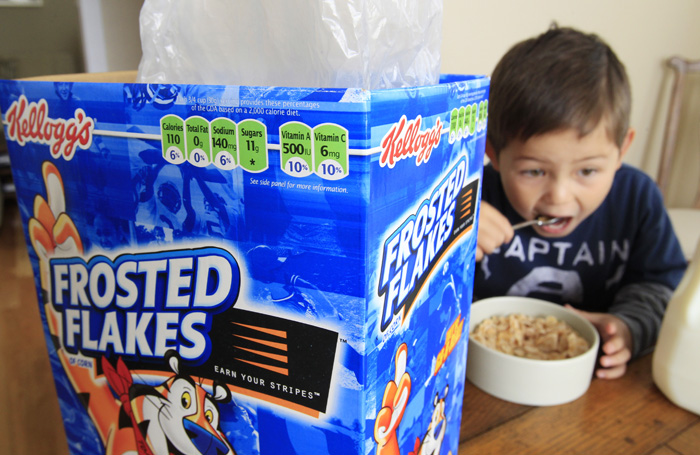WASHINGTON — Government officials fine-tuning guidelines for marketing food to children say they won’t push the food industry to get rid of colorful cartoon characters on cereal boxes anytime soon.
Allowing the brand icons from popular cereals to remain untouched is one of the concessions officials say they are likely to make as they work to convince food companies to curb junk food marketing to children.
Voluntary guidelines for industry proposed by the government earlier this year set maximum levels of fat, sugars and sodium, among other requirements, and asked food companies not to market foods that go beyond those parameters to children ages 2 through 17. The guidelines would apply to many media venues, including ads on television, in stores and on the Internet, in an effort to stem rising child obesity levels.
The guidelines also applied to food packaging and store displays, but officials backed off that part of the proposal at a House hearing on the subject today.
The food industry, backed by House Republicans who held the hearing, has aggressively lobbied against the voluntary guidelines, saying they are too broad and would limit marketing of almost all of the nation’s favorite foods, including some yogurts and many children’s cereals. Though the guidelines would be voluntary, food companies say they fear the government will retaliate against them if they don’t go along.
“This appears to be a first step toward Uncle Sam planning our family meals,” House Energy and Commerce Committee chairman Rep. Fred Upton, R-Mich., said at the hearing.
Following the industry objections, the congressional pushback and a public comment period on the proposal, the government agencies involved appear to be softening their approach. Officials from the Federal Trade Commission, the Agriculture Department and the Centers for Disease Control and Prevention, who jointly wrote the guidelines, said at the hearing that they weren’t done writing them yet.
David Vladeck, director of the Federal Trade Commission’s Bureau of Consumer Protection, said the coalition of government agencies is “in the midst of making significant revisions” to the original proposal.
Among the changes he suggested are narrowing the age group targeted and focusing on children aged 2 to 11 instead of up to age 17 and allowing marketing of the unhealthier foods at fundraisers and sporting events. Vladeck also said that his agency would not recommend that companies change packaging or remove brand characters from food products that don’t qualify, as was originally suggested in the guidelines.
“Those elements of packaging, though appealing to children, are also elements of marketing to a broader audience and are inextricably linked to the food’s brand identity,” Vladeck said at the hearing. Tony the Tiger is well-known as the mascot for Frosted Flakes and Toucan Sam for Froot Loops, both Kelloggs’ cereals.
Still, industry officials say they would not be appeased by the tweaks to the proposal. Food companies said they want the government to prove how the changes will help stem obesity and do a cost analysis looking at the effects through the chain to customers.
The industry came out with its own guidelines over the summer, proposing to limit advertising on some foods for children but adjusting the criteria. Though the industry proposal is more lenient than the government plan, the effort has won praise from federal officials, who said they would consider it if they finalize the guidelines.
It isn’t clear how soon that will happen. House Republicans have attempted to delay the guidelines through the budget process by asking for further study of their impacts. If they are not delayed by Congress, a final draft of the standards could come by the end of the year.
California Rep. Henry Waxman, the top Democrat on the panel, said he believes the Republicans are trying to protect industry by objecting to the guidelines and holding the hearing to criticize government officials.
“If we do nothing, the epidemic of obesity in children is not going to stop,” Waxman said. “The food manufacturers and advertisers are not going to change what has been working for them, because what has been working for them has been adding to their profits.”
The FTC’s Vladeck reminded critics that the agencies were directed by Congress to write the voluntary guidelines in 2009 in an effort to reduce childhood obesity.
He called the idea that the voluntary guidelines would become mandatory “a myth.”
“I can’t stress enough that these are voluntary guidelines and our mandate was to give guidance to industry,” Vladeck said. “And that’s what we are trying to do.”
Send questions/comments to the editors.


